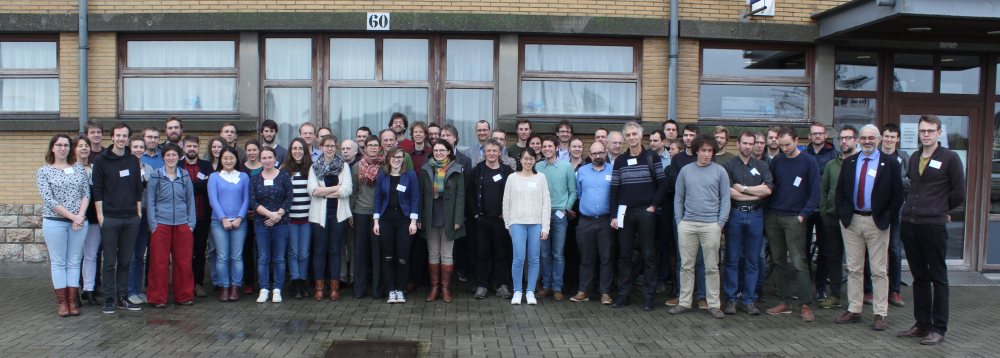
LifeWatch Belgium held its first Users & Stakeholders meeting in Ostend, on 25 and 26 January 2018.
The meeting was open to all known users and stakeholders of the Belgian LifeWatch infrastructure. In total, 87 participants from a multitude of Belgian research institutes and universities, registered for this very interesting and successful event.
Please read below for an account of the meeting.
The meeting was open to all known users and stakeholders of the Belgian LifeWatch infrastructure. In total, 87 participants from a multitude of Belgian research institutes and universities, registered for this very interesting and successful event.
Day 1 (Thursday January 25th 2018) started with a view from the science-policy perspective on the LifeWatch ESFRI; and an introduction about LifeWatch as a European e-science infrastructure to support biodiversity and ecosystem research. After a presentation about the LifeWatch Taxonomic Backbone, the Belgian LifeWatch partners each presented a comprehensive overview of their ongoing projects, the achieved results from the previous years and the future plans. The remainder of the day, these infrastructure projects and their applications were showcased more into detail in the form of several user stories.
Participants learned about (1) Catrein: towards a cameratrap research infrastructure; (2) DNA Barcoding for Forensics; (3) Detection and identification of mosquito species (Culicidae) in Belgium; (4) Saigas on the brink: multi-disciplinary analysis of the factors influencing mass mortality events; (5) The use of ecotopes for biodiversity conservation: the case of Violet Coper (Lycaena helle); (6) ANTABIS: feedback and perspectives from a long-term user; and (7) EMODnet Biology as a user of the LifeWatch infrastructure. Day 1 was concluded with 2 presentations by international LifeWatch partners: LifeWatch Greece and LifeWatch Sweden, thus demonstrating the international collaborations of LifeWatch Belgium.
On Day 2 (Friday January 26th 2018), the user stories continued: (8) Towards a qualitative spatial sensor network for long term observation of harbor porpoises; (9) Is this for (r)eel? Permanent fish tracking in Flanders with acoustic telemetry; (10) GPS-tracking migration and foraging movements of Western Marsh Harrier Circus aeruginosus breeding in the Low Countries; (11) From GPS data to daily decisions in 2 sympatric gull species; (12) Long-term monitoring of climate change effects on short vegetation; (13) Building and using the MarineSPEED benchmark dataset; and (14) Linking occurrences, traits and the environment to map the diversity of marine life.
During Friday afternoon, twelve demonstrations were organized to familiarize participants with LifeWatch tools and systems. Guided demo tours led the participants through interactive demonstrations on LifeWatch Data Explorer; Swedish LifeWatch Analysis Portal; New Antarctic Biodiversity Data Portal; European Tracking Network (ETN); Live demo of the camera traps; Live demo of the ZooScan; LifeWatch Taxonomic Backbone; LifeWatch Marine VRE; LifeWatch Wallonia-Brussels WebGIS; Knock knock, who’s there? (bat calls); RGBIF package; and WateRinfo package.
The agenda can be consulted on the link below. The user stories abstract booklet can be downloaded here.
The event clearly demonstrated that the Belgian LifeWatch community is quite active. The multitude of interesting and impressive user stories showcased the individual projects that are going on and the immense progress LifeWatch Belgium is making.